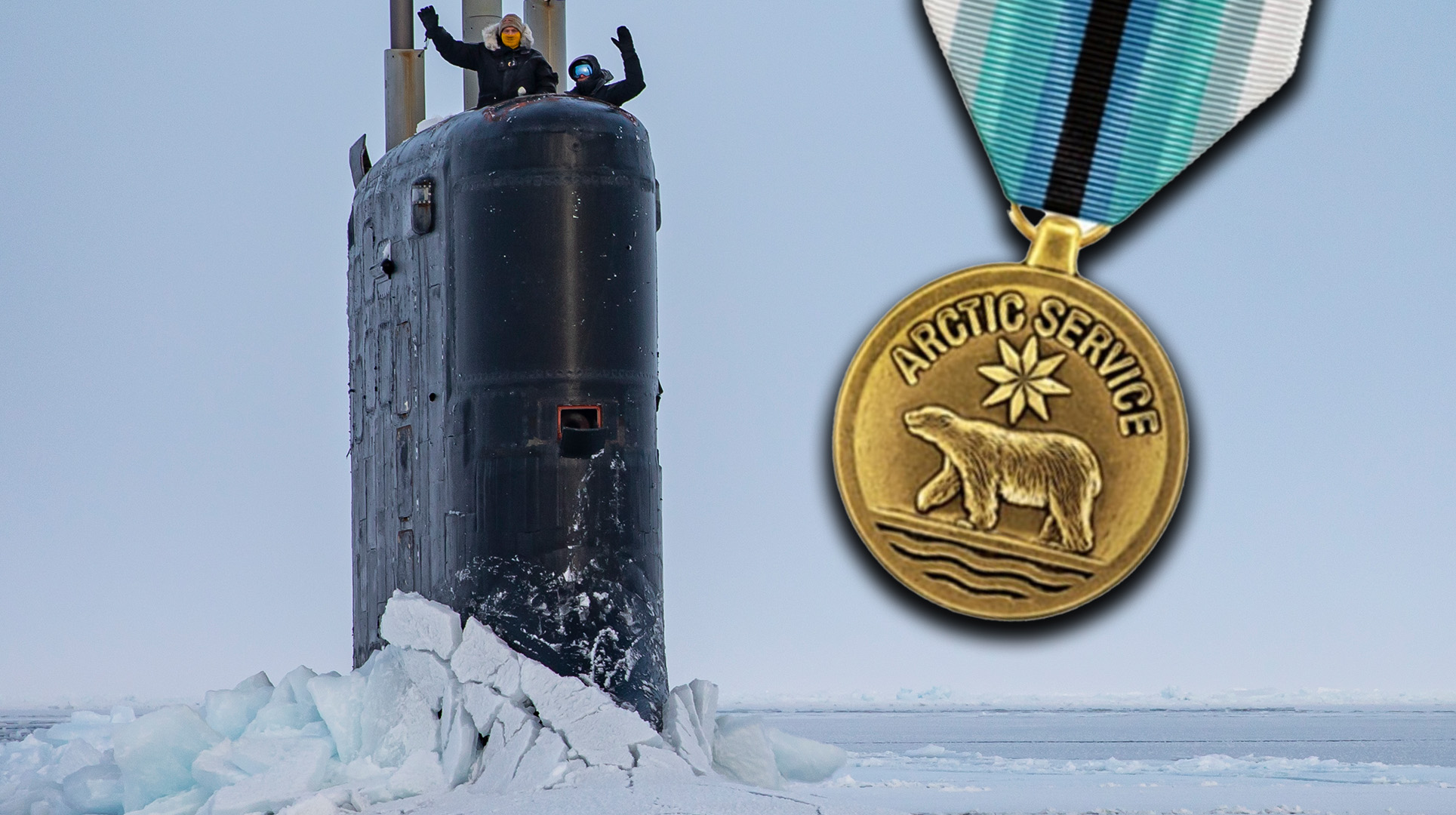
Sailors on a fast-attack submarine became the Navy’s first-ever crew to receive the service’s new Arctic Service Medal, a decoration created last year to recognize missions that travel over, below or that surface through ice-covered Arctic waters.
The crew of the USS Indiana, a Virginia-class attack sub, earned the medal for their participation last March in Operation Ice Camp, a multi-national event held off the coast of Alaska which, atypically among large-scale military exercises, is exactly what it sounds like. Over three frigid weeks, troops from all five U.S. military services and the United Kingdom, Australia, Canada and France set up and maintained a 60-person camp, dubbed Camp Whale on a barren ice sheet in the Beaufort Sea.
The camp took its name from the USS Whale, a submarine that reached the North Pole in 1969 by diving under the Arctic ice cap and surfacing through the ice at the pole. The Indiana arrived at Camp Whale the same way, surfacing through the ice layer.
Chief of Naval Operations Adm. Lisa Franchetti, who was at Camp Whale to meet the Indiana in March, presented the new medals Sept. 17 to the crew and others at Naval Submarine Base New London, Connecticut.
The Arctic Service Medal was authorized in 2023 as an extension to the Arctic Service Ribbon, a decoration that sailors have long been awarded for clocking 28 days of duty above the Arctic Circle. The new medal, on the other hand, is awarded for specific underway missions including an ice-covered strait transit (like the Bering Strait or Barrow Strait), transit of the North Pole (which the Navy defines as latitudes above 82-degrees north), submarines that surface vertically through ice or that spend at least seven days “of classified military operations while under the marginal ice zone or pack ice.”
Personnel assigned to an ice camp who set up on an ice flow are also eligible.
Operation Ice Camp was the Navy’s 99th arctic surface-and-subsurface exercise, according to a Navy release, and largest. The Pentagon has made clear in recent policy updates and troop basing that the Arctic is likely to be a focus of operations, matching increased interest in the region from China and Russia.
“Our Department of Defense Arctic Strategy makes it clear that we must be able to operate in the Arctic to protect our homeland and preserve our defense-treaty commitments,” Franchetti told the Indiana crew. “Your actions demonstrate how the U.S. Navy is enhancing our Arctic capability by investing in sensors, intelligence, and information and sharing capabilities with our Allies and partners so we can better understand the environment.”
Though Russian and Chinese militaries are the pacing threat behind Operation Ice Camp, there was no sign that the Indiana crew faced the same menace that another Navy sub famously stared down in the 2003 edition of the exercise, which was then known as ICEX 2003.

During that exercise, the USS Connecticut similarly surfaced through a sheet of ice, then north of Alaska. But while the Indiana was greeted by the Navy’s senior-ranking admiral last spring, the Connecticut was met only by a local polar bear looking for a snack.
For about 30 minutes, the bear circled the ship and eventually jumped on and pushed — and even appeared to bite — the boat’s tail as the crew watched on the ship’s periscope camera.
The Navy confirmed at the time that neither the sub nor the bear sustained permanent damage.
The latest on Task & Purpose
- Four Marines trained an Air Force base to take the Marine Corps fitness test. The Air Force gave them medals for it
- Sailor proudly rocks ‘E-4 Mafia’ patch as he stands watch on USS Abraham Lincoln
- The A-10 era is over for this legendary Air Force attack squadron
- A comprehensive guide to the shoulder tabs Army soldiers wear on their uniforms
- 101st Airborne Division troops headed to Middle East, 3rd Infantry will go to Europe
